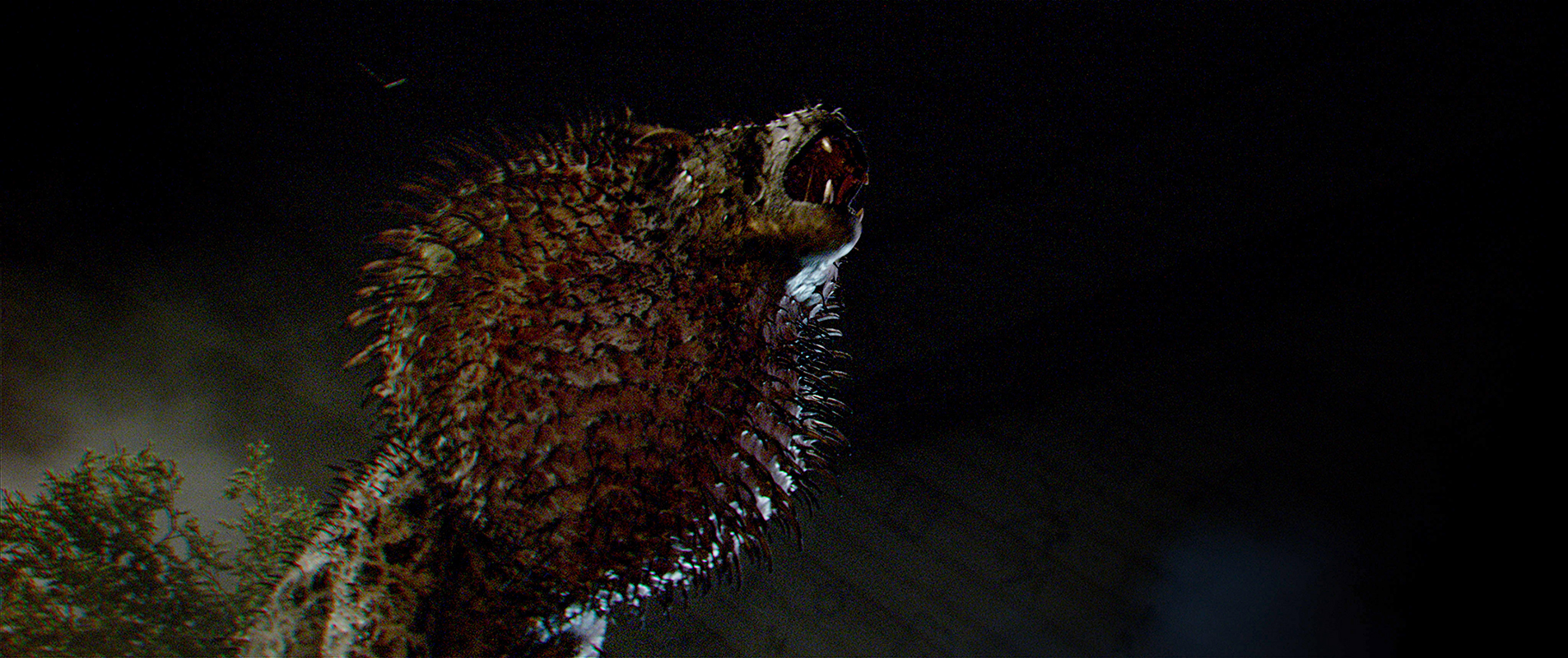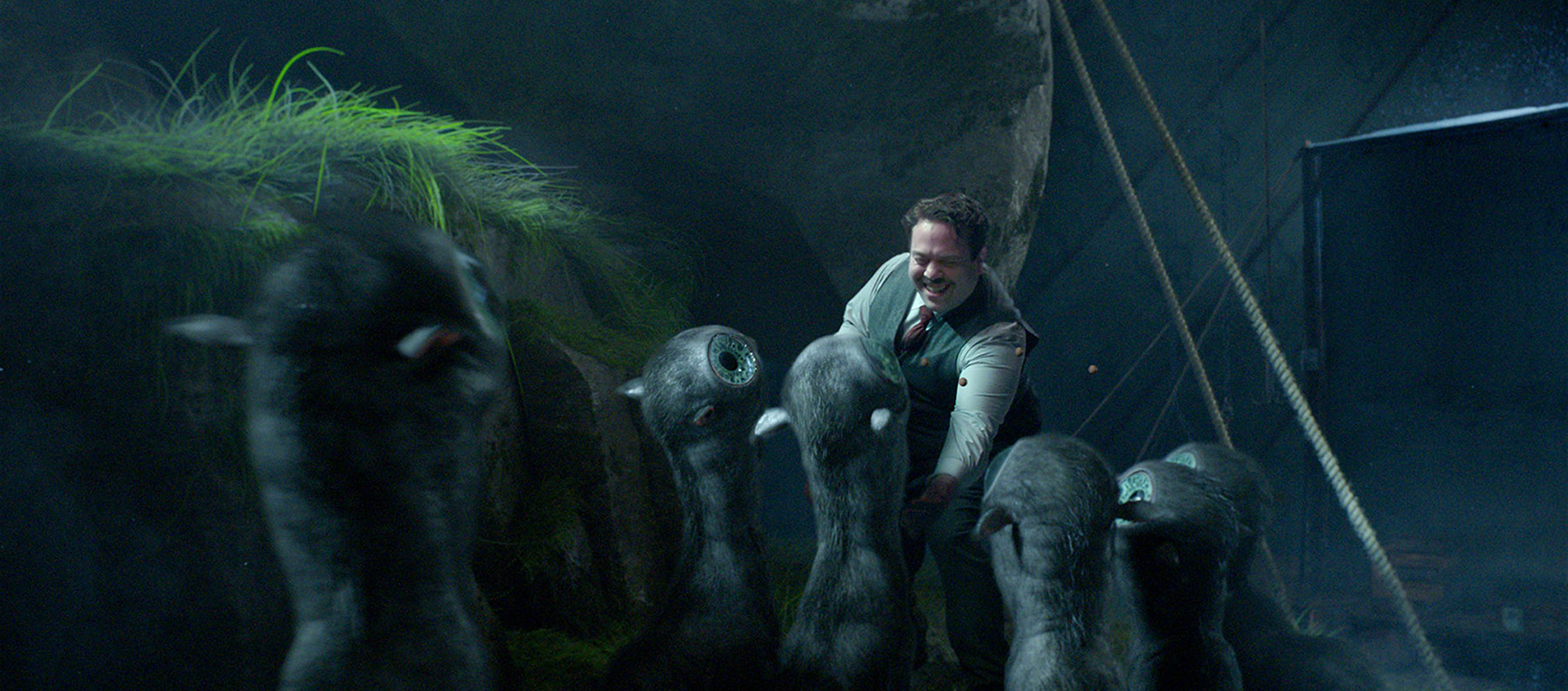Building 'Fantastic Beasts': How Artists Model Magical Creatures

Alongside the witches and wizards inhabiting the fictional world of "Harry Potter" are live animals that represent a variety of shapes, sizes and magical abilities. Now, the film "Fantastic Beasts and Where to Find Them" (Warner Bros. Pictures, 2016) introduces moviegoers to a bevy of these peculiar and endearing creatures.
Like real animals, they can be furry, scaly or covered with spikes. Unlike real animals, they may instantaneously transform, turn invisible, teleport, or produce massive explosions.
But before any of these made-up animals can scurry across the screen, teams of digital artists must build them from scratch, working to construct a "living" form that reflects the filmmakers' vision of a nonexistent creature, yet still moves and behaves as a real animal does. The result is a delicate balance of imagination and real-world animal behavior and biology. [In Photos: A Bevy of Magical 'Fantastic Beasts']
The 3D modelers' and animators' "magic" begins when a film studio delivers the preliminary concept for an imaginary animal to the visual effects group, and then many artists begin a collaboration that brings the concept to life, according to Dominic Piché, a digital artist at the visual effects company Rodeo FX in Montreal, and a modeling supervisor for "Fantastic Beasts."
Murtlaps and mooncalves
Rodeo FX was responsible for creating several creatures for the film, including the murtlap, a type of oversized hairless rat with tuber-like tentacles on its back; the nundu, which represents the unlikely combination of a lion and a spiky pufferfish; the diricawl, a colorful bird that can vanish at will (and which Muggles — non-magical people — call the dodo); and the mooncalf, a charming long-necked animal with enormous eyes at the top of its head.
In the real world, animals look the way they do because they have evolved to survive under specific conditions in certain environments. If they live in Arctic habitats, they may have thick fur or layers of blubber to protect them from the cold; if they are carnivores, they possess certain types of teeth, claws, or other features that help them catch their prey. And these same criteria apply to animated creatures, Yvon Jardel, Rodeo FX artist and animation supervisor for "Fantastic Beasts" told Live Science.
"The approach is to imagine: If this animal evolved on this planet, what would it look like based on its purpose in life?" Jardel explained. "We get inspired by living creatures in extreme conditions, to create not a hybrid but something that would make sense in terms of evolution."
Sign up for the Live Science daily newsletter now
Get the world’s most fascinating discoveries delivered straight to your inbox.
The modelers use these guidelines to shape muscles and bones to support realistic movement. They also define the animal's more cosmetic details: eyes, teeth, claws and other structures, as well as the overall surface texture.
Walk this way
Once the artists have figured out the animal's general body plan, they make 3D models of it. Next, animators test the models to make sure that the body can perform as intended.
"If we're creating a dodo and the dodo can't run — we have a problem," Jardel said. "Then we have to go back and figure out if the skeleton or proportions are correct, and get more inspiration and more reference to see if we can find where it went wrong."
Sometimes, a single creature can borrow inspiration from several unrelated animals, Piché said. For example, the mooncalf was imagined to be about the size of a goat. Its body and limbs were based primarily on those of an otter, though its fur came from a Vietnamese pig, its inner ears from a cat, and its long neck from a giraffe's, Piché told Live Science.

Because the mooncalf's body was so unusual, the modelers created an entire skeleton and several muscle groups so that the animators could make it walk more believably, he added.
The pufferfish challenge
For the nundu, the animators' work was somewhat more straightforward, Jardel said. The nundu's body shape was highly similar to a lion's, so they could reference the ways that big cats move and recreate that motion in the model.
However, realistically visualizing the nundu's pufferfish-like spiky skin texture — especially its throat pouch, which inflates when the nundu roars — presented a bit of a challenge, Piché said.
"We had to build a crest that would blend between the spikes, so that when it blows up you sense cartilage under the flesh that pushes the flesh out," Piché explained. "Every spike was placed in a certain way so that when it moves from rest pose to roar pose and inflates, it would push the skin a certain way and push the spikes at a certain angle. Everything was very precise and had to look natural," he said.
In the end, an animated creation may end up with only a few minutes of screen time. But in those moments, see if you can catch a glimpse of the living creatures that may have inspired the pattern of fur on its back, the shape of its ears, the sweep of its tail, or the spring in its step. These magical movie beasts have more in common with everyday animals than you might have thought.
Original article on Live Science.

Mindy Weisberger is an editor at Scholastic and a former Live Science channel editor and senior writer. She has reported on general science, covering climate change, paleontology, biology and space. Mindy studied film at Columbia University; prior to Live Science she produced, wrote and directed media for the American Museum of Natural History in New York City. Her videos about dinosaurs, astrophysics, biodiversity and evolution appear in museums and science centers worldwide, earning awards such as the CINE Golden Eagle and the Communicator Award of Excellence. Her writing has also appeared in Scientific American, The Washington Post and How It Works Magazine. Her book "Rise of the Zombie Bugs: The Surprising Science of Parasitic Mind Control" will be published in spring 2025 by Johns Hopkins University Press.









